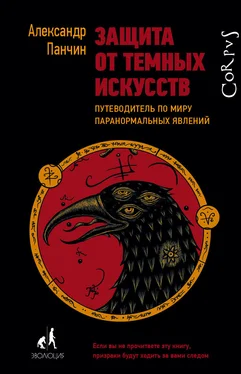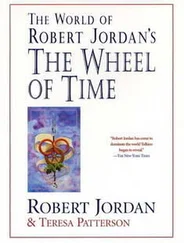Scott-Phillips T. C., Kirby S.: Language evolution in the laboratory . Trends Cogn Sci 2010, 14 (9): 411–417.
Kirby S.: Culture and biology in the origins of linguistic structure . Psychon Bull Rev 2017, 24 (1): 118–137.
Basalla G.: The Evolution of Technology . 1988.
Syvanen M.: Evolutionary implications of horizontal gene transfer . Annu Rev Genet 2012, 46: 341–358.
Baker S. F. et al.: Influenza A and B virus intertypic reassortment through compatible viral packaging signals . J Virol 2014, 88 (18): 10778–10791.
Kong A. et al.: Rate of de novo mutations and the importance of father’s age to disease risk . Nature 2012, 488 (7412): 471–475.
Beerenwinkel N. et al.: Cancer evolution: mathematical models and computational inference . Syst Biol 2015, 64 (1): e1–25.
Murchison E. P. et al.: Genome sequencing and analysis of the Tasmanian devil and its transmissible cancer . Cell 2012, 148 (4): 780–791.
Das U., Das A. K.: Review of canine transmissible venereal sarcoma . Vet Res Commun 2000, 24 (8): 545–556.
Metzger M. J. et al.: Widespread transmission of independent cancer lineages within multiple bivalve species . Nature 2016, 534 (7609): 705–709.
Rainey P. B., Rainey K.: Evolution of cooperation and conflict in experimental bacterial populations . Nature 2003, 425 (6953): 72–74.
Dennett D.: Dangerous memes. 2002. www.ted.com/talks/dan_dennett_on_dangerous_memes
Wimmer H., Perner J.: Beliefs about beliefs: representation and constraining function of wrong beliefs in young children’s understanding of deception . Cognition 1983, 13 (1): 103–128.
Rhodes M., Brandone A. C.: Three-year-olds’ theories of mind in actions and words . Front Psychol 2014, 5: 263.
Moll H. et al.: Three-year-olds express suspense when an agent approaches a scene with a false belief . Dev Sci 2016, 19 (2): 208–220.
Knudsen B., Liszkowski U.: Eighteen– and 24 -month-old infants correct others in anticipation of action mistakes . Dev Sci 2012, 15 (1): 113–122.
Garnham W., Perner J.: Actions really do speak louder than words – but only implicitly: young children’s understanding of false belief in action . Br J Dev Psychol 2001, 19: 413–432.
Buttelmann D. et al.: Eighteen-month-old infants show false belief understanding in an active helping paradigm . Cognition 2009, 112 (2): 337–342.
Buttelmann D. et al.: Great apes distinguish true from false beliefs in an interactive helping task . PLoS One 2017, 12 (4): e0173793.
Martin A., Santos L. R.: The origins of belief representation: monkeys fail to automatically represent others’ beliefs . Cognition 2014, 130 (3): 300–308.
Call J., Tomasello M.: Does the chimpanzee have a theory of mind? 30 years later . Trends Cogn Sci 2008, 12 (5): 187–192.
Premack D., Woodruff G.: Does the chimpanzee have a theory of mind? Behav Brain Sci 1978, 1 (4): 515–526.
Krupenye C. et al.: Great apes anticipate that other individuals will act according to false beliefs . Science 2016, 354 (6308): 110–114.
Povinelli D. J. et al.: Inferences about guessing and knowing by chimpanzees (Pan troglodytes) . J Comp Psychol 1990, 104 (3): 203–210.
Baron-Cohen S. et al.: Does the autistic child have a “theory of mind”? Cognition 1985, 21 (1): 37–46.
Baron-Cohen S. et al.: The “Reading the Mind in the Eyes” Test revised version: a study with normal adults, and adults with Asperger syndrome or high-functioning autism . J Child Psychol Psychiatry 2001, 42 (2): 241–251.
Baron-Cohen S., Wheelwright S.: The empathy quotient: an investigation of adults with Asperger syndrome or high functioning autism, and normal sex differences . J Autism Dev Disord 2004, 34 (2): 163–175.
Senju A. et al.: Mindblind eyes: an absence of spontaneous theory of mind in Asperger syndrome . Science 2009, 325 (5942): 883–885.
Кинг Конг в стоге сена. www.youtube.com/watch?v=qUkk0hSrT2Q
Реклама IKEA. www.youtube.com/watch?v=dBqhIVyfsRg
Heider F., Simmel M.: An experimental study of apparent behavior . Am J Psychol 1944, 57 (2): 243–259.
Heider F., Simmel M.: Experimental study of apparent behavior. 1944. www.youtube.com/watch?v=n9TWwG4SFWQ
Klin A.: Attributing social meaning to ambiguous visual stimuli in higher-functioning autism and Asperger syndrome: The Social Attribution Task . J Child Psychol Psychiatry 2000, 41 (7): 831–846.
Castelli F. et al.: Autism, Asperger syndrome and brain mechanisms for the attribution of mental states to animated shapes . Brain 2002, 125 (Pt 8): 1839–1849.
Kim J. et al.: Rooting for (and then abandoning) the underdog . J Appl Soc Psychol 2008, 38 (10): 2550–2573.
Brotherton R.: Suspicious Minds: Why We Believe Conspiracy Theories. 2015.
Mayrhofer R., Waldmann M.: Indicators of causal agency in physical interactions: the role of the prior context . Cognition 2014, 132 (3): 485–490.
van Buren B., Scholl B. J.: Minds in motion in memory: enhanced spatial memory driven by the perceived animacy of simple shapes . Cognition 2017, 163: 87–92.
Gao T. et al.: The wolfpack effect. Perception of animacy irresistibly influences interactive behavior . Psychol Sci 2010, 21 (12): 1845–1853.
Castelli F. et al.: Movement and mind: a functional imaging study of perception and interpretation of complex intentional movement patterns . Neuroimage 2000, 12 (3): 314–325.
Green M. F. et al.: Social cognition in schizophrenia . Nat Rev Neurosci 2015, 16 (10): 620–631.
Riekki T. et al.: Supernatural believers attribute more intentions to random movement than skeptics: an fMRI study . Soc Neurosci 2014, 9 (4): 400–411.
Schjoedt U. et al.: Highly religious participants recruit areas of social cognition in personal prayer . Soc Cogn Affect Neurosci 2009, 4 (2): 199–207.
Kapogiannis D. et al.: Cognitive and neural foundations of religious belief . Proc Natl Acad Sci USA 2009, 106 (12): 4876–4881.
Boyer P.: Being human: Religion: bound to believe? Nature 2008, 455 (7216): 1038–1039.
Gervais W. M.: Perceiving minds and gods: how mind perception enables, constrains, and is triggered by belief in gods . Perspect Psychol Sci 2013, 8 (4): 380–394.
Читать дальше
Конец ознакомительного отрывка
Купить книгу






![Александр Панчин - Гарвардский Некромант [litres]](/books/390749/aleksandr-panchin-garvardskij-nekromant-litres-thumb.webp)



